In 2022, the aerial surveillance team of the Royal Belgian Institute of Natural Sciences realised 244 flight hours over the North Sea. 19 cases of operational marine pollution from ships were observed, two involving oil and 17 other harmful substances. Suspicious sulphur levels were measured in the smoke plumes of 47 ships and suspicious nitrogen levels on 35 ships. The aircraft successfully participated in an internationally coordinated surveillance mission of the offshore oil and gas installations and an international chemical pollution detection mission. Furthermore, two seasonal marine mammal surveys were carried out, and the aircraft realised several ‘on call’ flights that included support to rescue transmigrants at sea. Navigation violations, entering prohibited zones and sailing without the mandatory automatic identification system were reported more in 2022 than before.
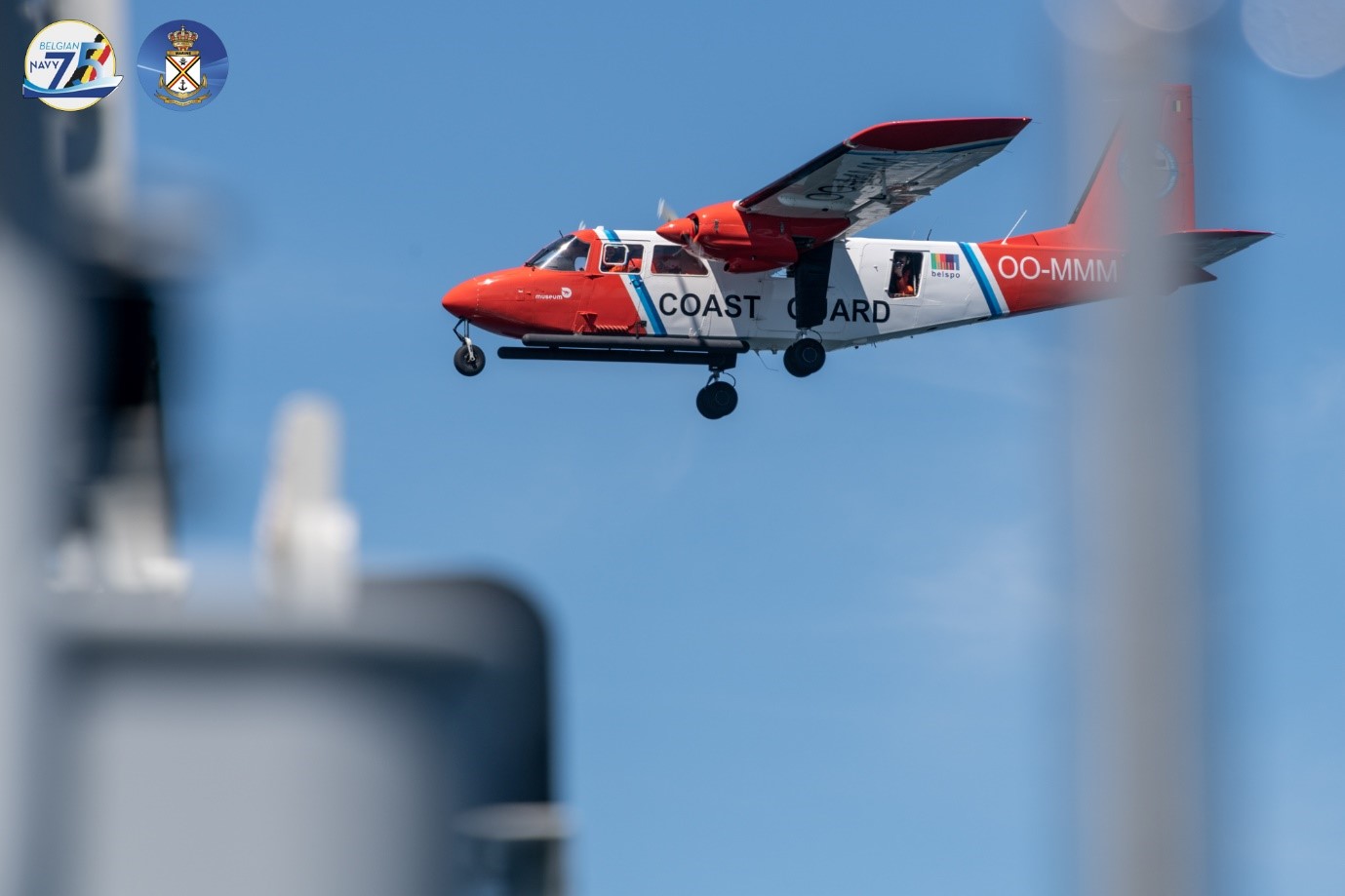
As part of the national aerial surveillance programme, 244 hours were flown over the North Sea in 2022. This programme is organised by the Scientific Service MUMM (Management Unit of the Mathematical Model of the North Sea) of the Royal Belgian Institute of Natural Sciences, in collaboration with Defence.
The majority of flight hours were national flights (220 hours). Of these, 211.5 hours were performed in the context of the Belgian Coast Guard. Pollution control came convincingly first (164 hours), with both monitoring of discharges of oil, other harmful substances and waste into the water (MARPOL Annex I, II and V respectively) and monitoring of sulphur and nitrogen emissions from ships into the air (enforcement of MARPOL Annex VI). Fisheries monitoring was also covered (42.5 hours on behalf of the Flemish Sea Fisheries Service), the aircraft was called up several times to verify marine pollution, to support transmigration rescue operations in French waters, and to locate lost Search-and-Rescue equipment (3 hours), and two hours of air support was provided during pollution control exercises. 8.5 hours were devoted to marine mammal monitoring.
International flights under the Bonn Agreement accounted for 24 flight hours in 2022 (see below: a Tour d’horizon mission and participation in the MANIFESTS Sea Trials).
Spills from ships
In August 2022, a few oil slicks were observed in the UK waters off Ramsgate during several flights, likely from a spill in the fuel tank of an old shipwreck. The case thus qualified as an accidental spill, and several British ships were involved in the clean-up. There was no direct impact on Belgian waters.
Two operational oil spills were identified in 2022, confirming the decreasing trend of the last decade (see graph). The first, very weathered, oil spill was observed at the estuary of the Western Scheldt in Dutch waters. The oil slick was not combatable and could not be linked to a polluter. The second oil slick was more limited and was observed in the Westhinder Anchorage area. It appeared to be linked to a bulk carrier at anchor. However, a check at sea by the Maritime Police revealed no new elements that could confirm the suspicion of infringement.
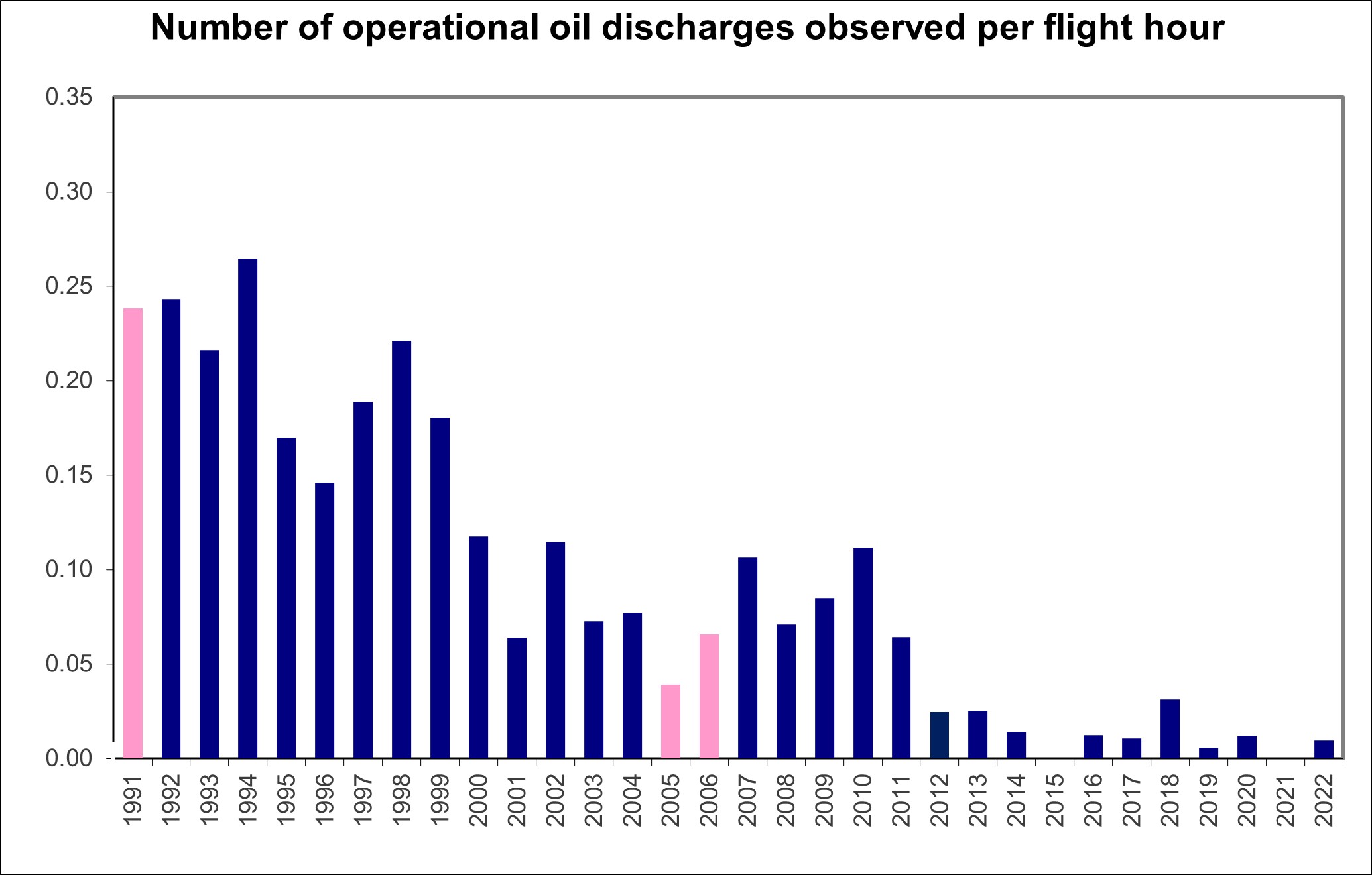
2022 resulted in no violations against the requirements of Annex V of the MARPOL Convention which covers the discharge of garbage and solid bulk substances. However, as many as 17 cases of operational pollution by noxious liquid substances other than oil (MARPOL Annex II) were observed. One of these could be linked to a ship in UK waters. The case was handed over to the relevant UK authorities for verification and follow-up.
In contrast to oil pollution, other noxious liquid substances are still a common problem, even on a slight upward trend (see graph). Although these are often, but not always, authorised ship discharges in accordance with international discharge standards, stricter discharge standards have been in force since 2021. This is particularly so for so-called ‘persistent floaters’ such as paraffin-like substances. However, no violations were detected on these in 2022.
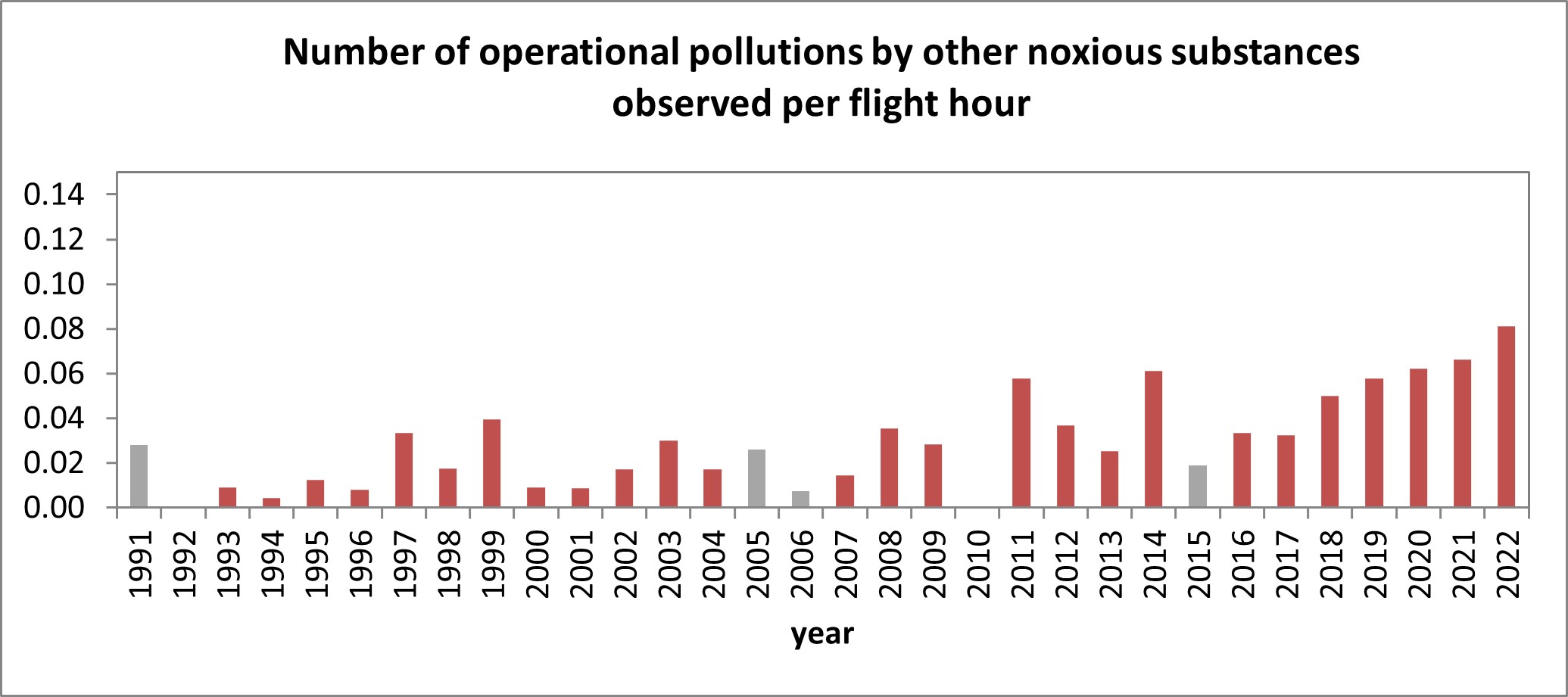
Three oil slicks were also observed in Belgian ports: two in the port of Antwerp and one in that of Ostend. The two oil slicks in the port of Antwerp were observed during transit flights from Antwerp airport (the home base of the aircraft) to the North Sea. One of these two detections involved a group of three smaller slicks with five different ships in the vicinity. The spots could not be clearly linked to any of these ships. The other slick was spotted at the Antwerp gas terminal during a bunkering operation. The oil slick observed in the port of Ostend concerned a small slick with no polluter and was too limited to combat. All observations were immediately reported to the competent authorities to ensure follow-up.
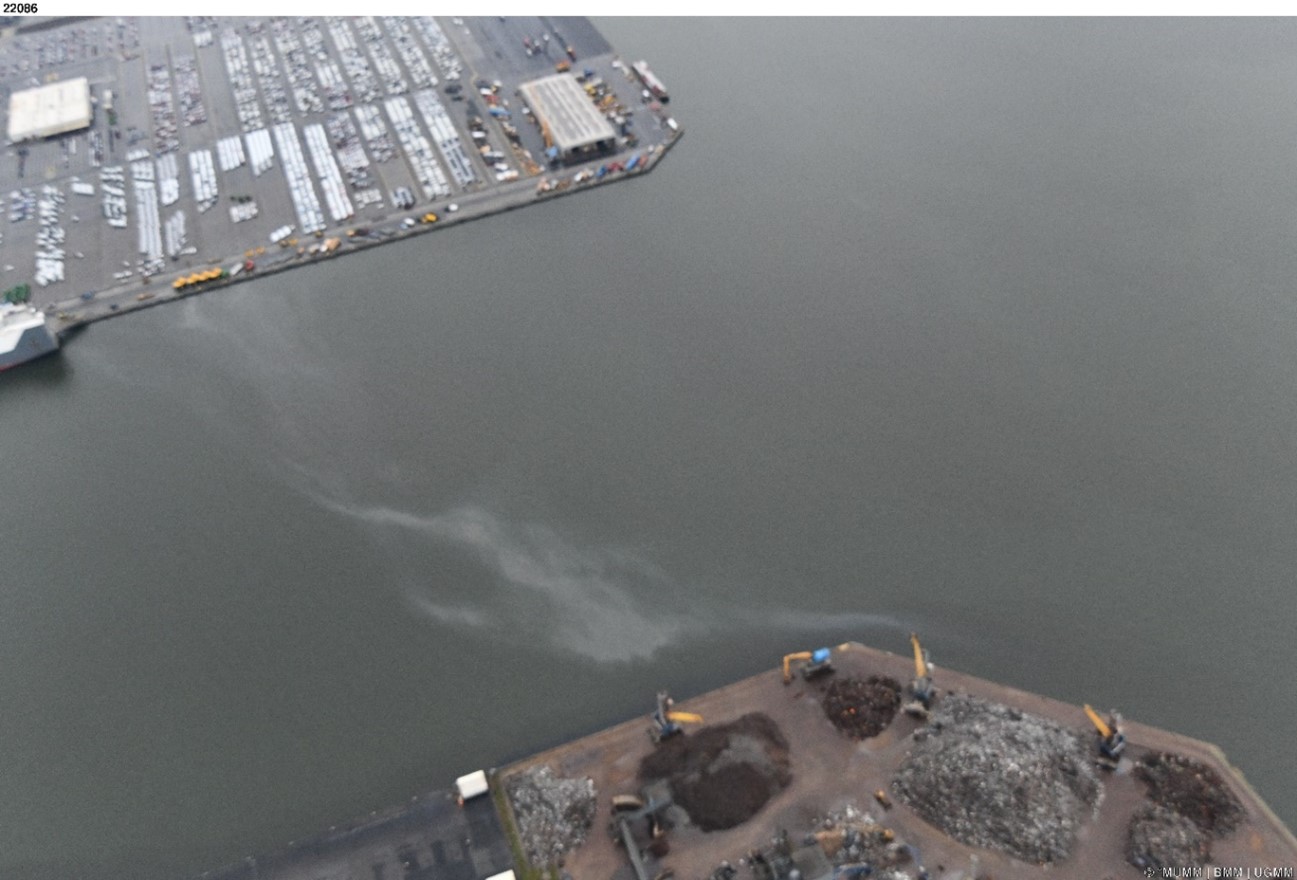
Monitoring of emissions to the air from ships at sea
By using a sniffer sensor in the aircraft, our country is considered a pioneer in the international fight against the air pollution from ships at sea (monitoring and enforcement of annex VI of the MARPOL convention). The sensor allows the measurement of various air pollutants in the exhaust of ships in real conditions.
The measurement of sulphur emissions has already been part of the programme since 2016. In order to monitor the strict sulphur limits that apply to ship fuel in the North Sea Emission Control Area (ECA), 61 sniffer flights (for a total of 91 hours) were carried out by the aircraft in 2022 over the Belgian monitoring area. Of the 965 ships whose sulphur emissions were measured, 47 had a suspiciously high sulphur content. These ships were duly reported to the relevant maritime inspection services and 13 were subsequently inspected on shore.
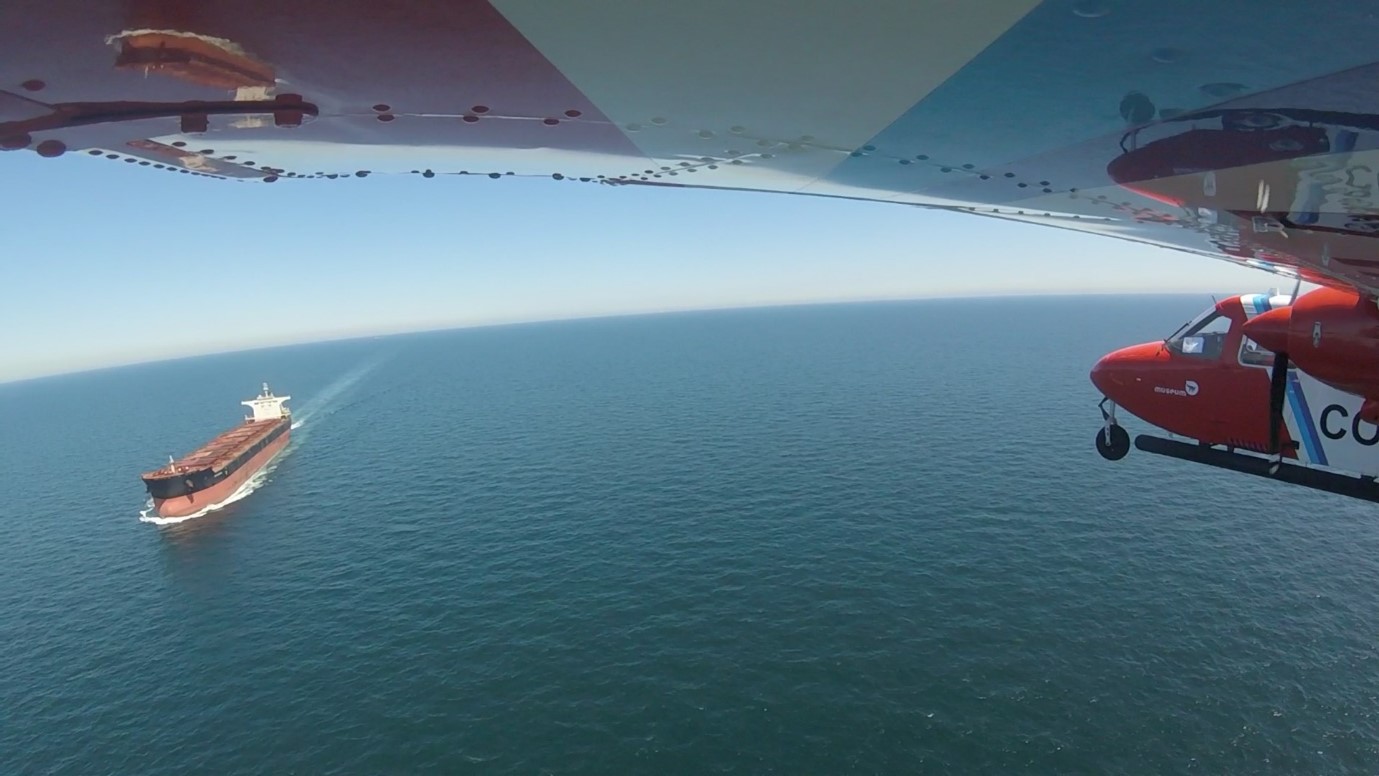
Thanks to the successful integration of a NOx sensor in 2020, MUMM’s aircraft can also measure the concentration of nitrogen compounds (NOx) in the exhaust plumes of ships in order to monitor and enforce the stricter limits that apply from 1 January 2021 in the North Sea Emission Control Area. Belgium has thus become the first country ready to monitor these stricter restrictions. Of the 963 ships for which nitrogen emissions were monitored in 2022, 35 suspicious values were reported.
Since 2021, a new sensor has been added to the sniffer set-up, namely the black carbon sensor. This sensor measures the amount of black carbon in the exhaust plumes of ships, which is a measure for the soot concentration. The soot concentration of 182 ships was measured in 2022. When exceptionally high soot concentrations are measured, the competent maritime port authorities are asked to take a sample of the fuel used. In 2023, these fuel samples will be analysed in the OD Nature laboratories in Ostend.
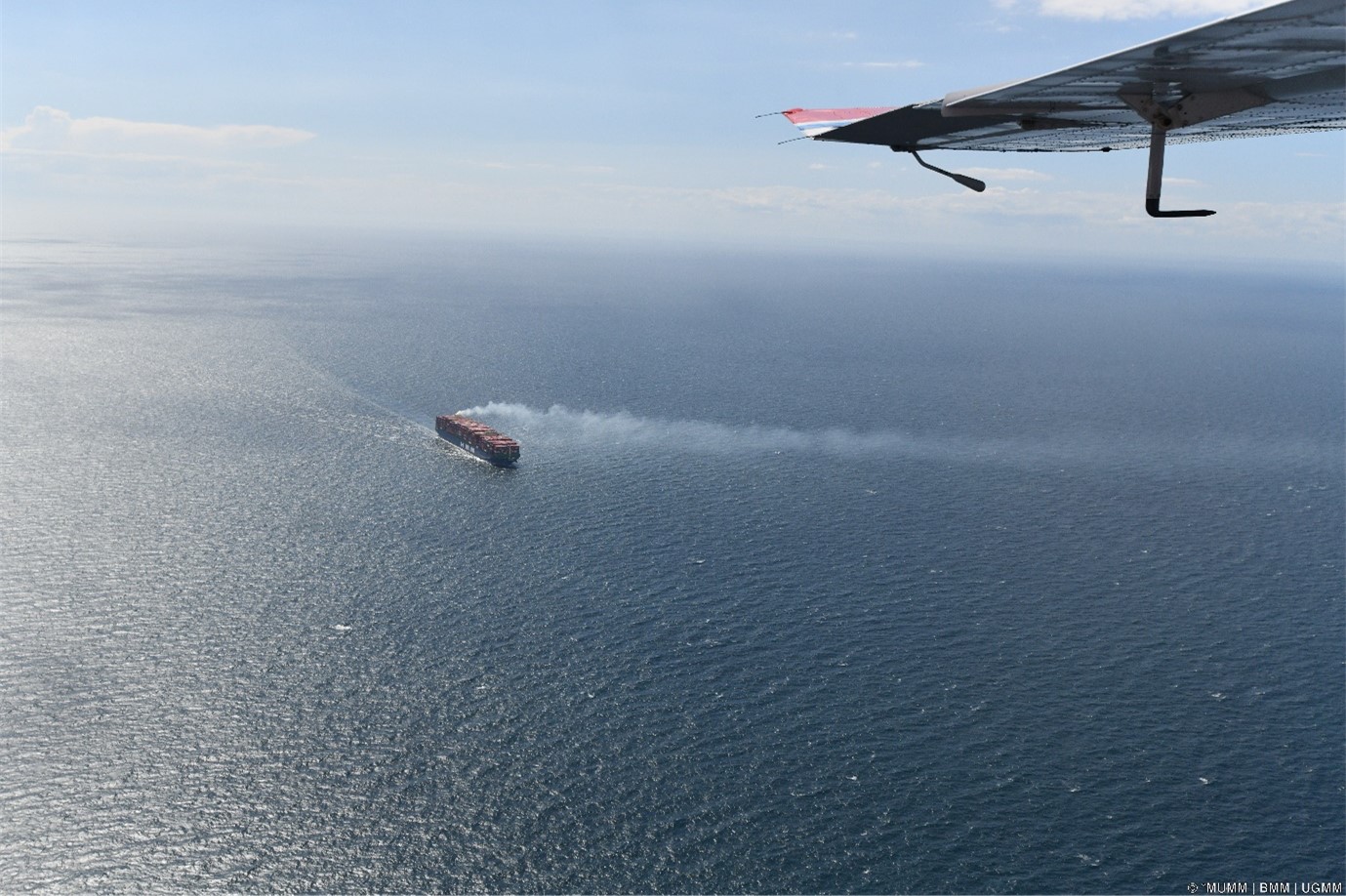
International missions
During the annual international ‘Tour d’Horizon‘ mission to monitor marine pollution from oil rigs in the central North Sea (in Dutch, Danish, British and Norwegian offshore waters), carried out under the Bonn Agreement in September 2022, the surveillance aircraft detected a total of 16 spills, of which 15 were oil spills and 1 was a spill of an unknown substance that could not be visually verified due to a low cloud ceiling. 13 spills could be directly linked to an oil platform. The three remaining slicks were observed without ships or platforms in the vicinity. All these observations were systematically reported to the competent coastal State for further follow-up, in accordance with international procedures.
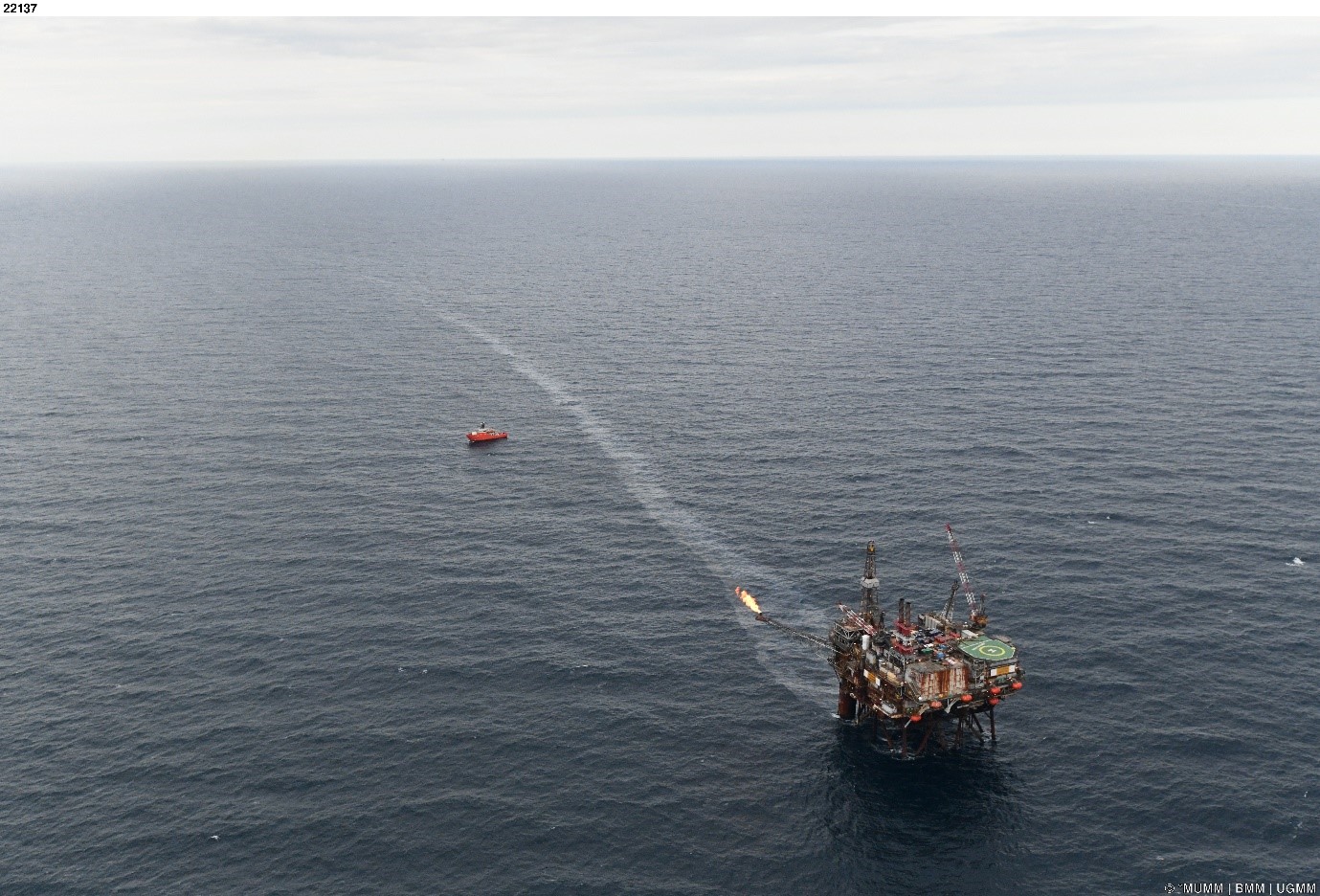
From 30 May to 2 June, the Belgian air surveillance participated in the international MANIFESTS Sea Trials for the detection of chemical pollution in Brittany (France). Participation in such exercises is crucial as pollution by substances other than oil appears to be increasing in frequency (see above), a large number of different chemicals are transported, each with a specific behaviour at sea, and regulations are very complex. During the MANIFESTS Sea Trials, various sensors on ships and flying units were tested at sea for their ability to identify different substances. The Belgian aerial surveillance aircraft made a constructive contribution, on which scientists can further optimise the sensors to better monitor chemical discharges in the future.
The mission in Brittany was combined with air emission monitoring at the border of the Emission Control Area, located at the entrance to the English Channel. Among other things, ships here have to switch to low-sulphur fuels. Sixty-two were checked, 18 of them in the immediate vicinity of the ECA border. Six of these 18 ships showed suspicious sulphur levels, and two high NOx emissions. These preliminary results illustrate that more monitoring at the ECA border is needed to improve MARPOL Annex VI enforcement.
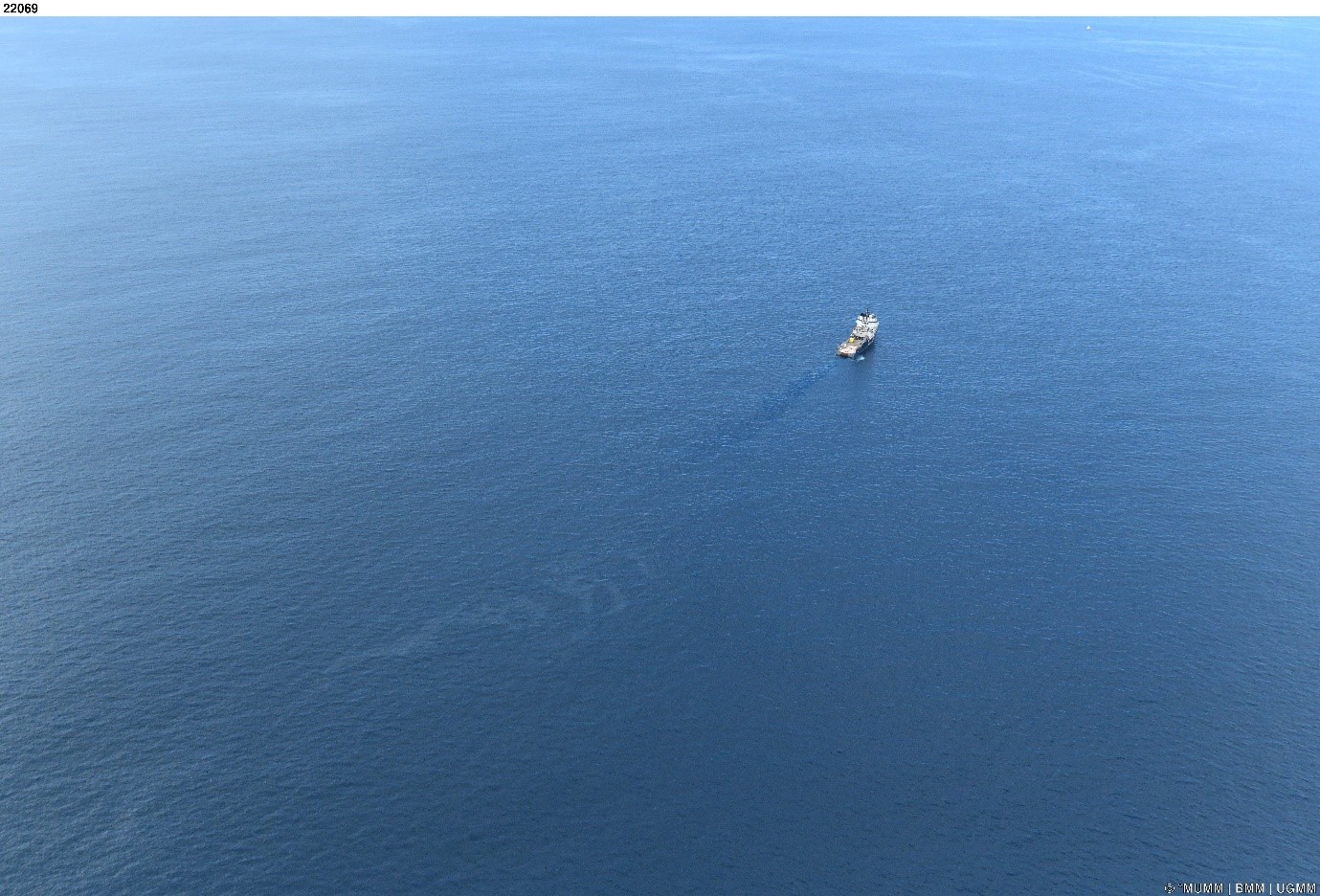
Monitoring of Marine Mammals
In 2022, the RBINS conducted marine mammals surveys in March and October. Respectively, 235 and 45 harbour porpoises were observed, resulting in average concentrations of 3.3 and 0.8 animals per km² of observed area. This is a lot of harbour porpoises for a surface area similar to that of Belgian waters, yet largely overlapping: over 11,000 in March and over 2,000 in October. A relatively high number of seals were also observed in 2022: 20 in March and 40 in October. There has never been so many.
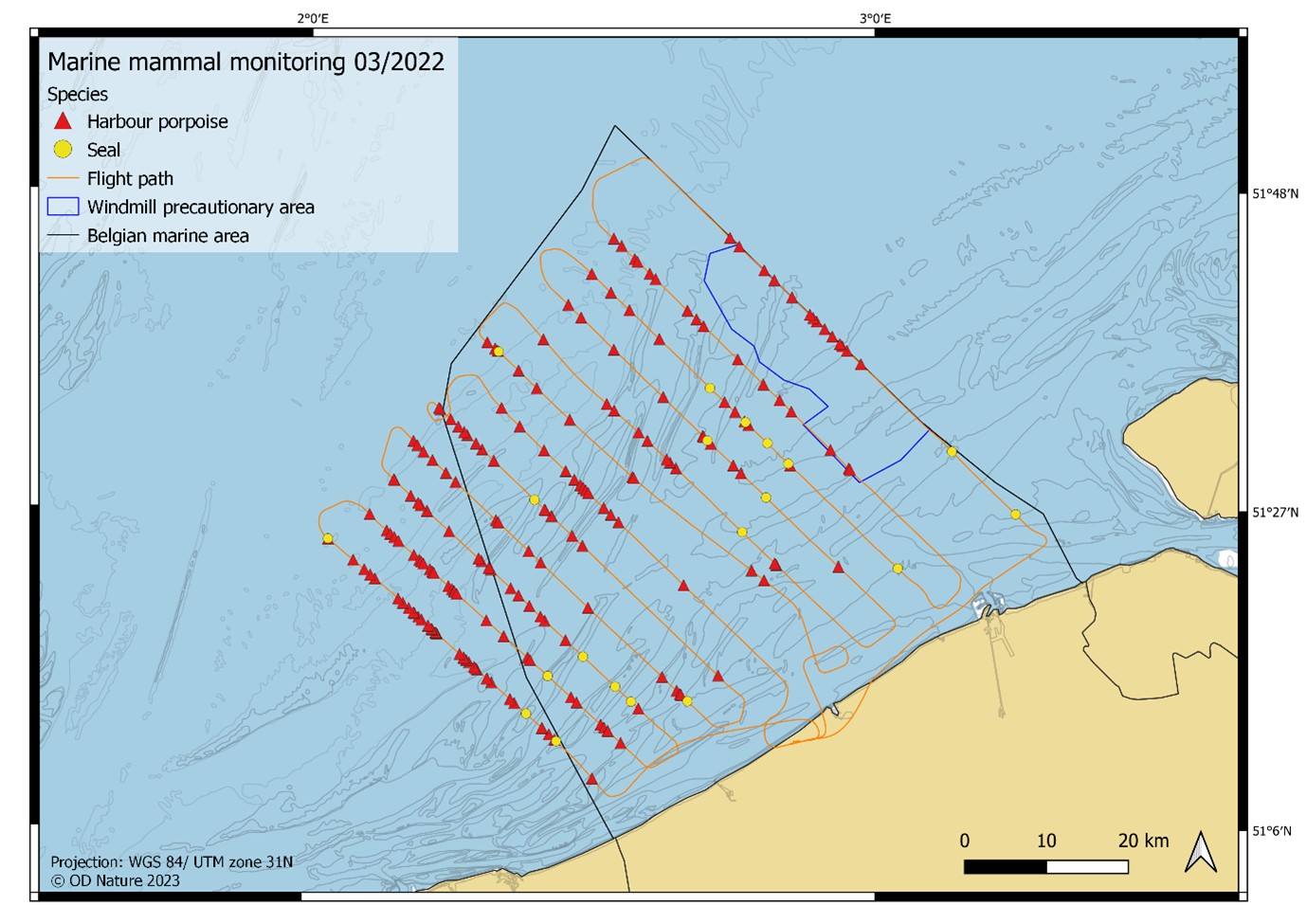
Extended maritime surveillance in the framework of the Coast Guard
Within the framework of the cooperation within the Belgian Coast Guard, the surveillance aircraft also contributes to broader missions of enforcement of maritime regulations and safety at sea. For example, in 2022, air operators reported 46 navigation violations to the Coast Guard Centre and the Directorate-General of Shipping (FPS Mobility and Transport). These mainly involved vessels ‘ghost sailing’ or anchoring in shipping lanes. As this type of infringement is on the rise, resulting in an increased risk of collisions, DG Shipping has been providing specific legal follow-up since January 2023.
In addition, 11 violations were also reported last year regarding entering areas at sea surrounded by a safety perimeter (e.g. the wind farms). This is also an increasing number, which can be explained, among other things, by the introduction of some new prohibited areas, such as the aquaculture farm (sea farm) off the coast of Nieuwpoort and the calibration area for scientific instruments off Ostend.

Finally, in 2022, no less than 17 ships were also observed sailing without Automatic Identification System (AIS), which, among other things, helps to prevent collisions. 16 of these cases involved fishing vessels. Again, this is a further increase in a regrettable trend.
